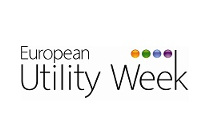Why PowerMatcher PowerMatcher
The current situation in electrical networks
In a world increasingly concerned about the cost, availability and environmental consequences of conventional energy supplies, the electrical power industry stands on the cusp of a profound transition. Presently, the power industry has to cope with a growing electricity demand using an ageing electricity infrastructure. This in parallel with the transition towards generation through intermittent and decentralized sources of clean(er) energy poses landmark challenges for the sector. Consumers are becoming “Prosumers”, by using energy from the grid at one time, while feeding in at another. Further, the supply-side controllability decreases since part of the installed capacity is intermittent and dependent on external conditions such as weather (wind, sun) or local heat demand (cogeneration). If energy supply and demand responded to real time and varying energy prices, a huge potential for controllability gains on the demand side would be generated. For instance, charging of the batteries of electric or plug in hybrid vehicles would create a price sensitive outlet for off peak demand. To address these challenges in a cost-effective manner, the Smart Grid requires a scalable two-way coordination mechanism that is able to communicate and optimize over a multitude of small to medium-sized controllable generators and loads, with the Smart Meter acting as the key enabler.
The missing link
The missing link is a communication and coordination protocol for Smart Grids, as part of a complete system architecture. An electricity network is needed that responds dynamically to the perEmanently changing supply and demand situations through real time market based solutions that automate control operations. Energy companies, consumers and regulators alike are seeking a vision for the grid, that extends the accommodation capabilities for increasing renewable energy generation. The envisaged system incorporates advanced grid technologies which enable complete grid communication and coordination from the consumer up all the way up to the network operator and the wholesale markets.
PowerMatcher
To fill in the missing link, an innovative software solution was designed: PowerMatcher. See about for a brief history on how PowerMatcher was established. PowerMatcher technology is a distributed energy systems architecture and communication protocol, which facilitates implementation of standardized, scalable Smart Grids, that can include both conventional and renewable energy sources. Through intelligent clustering, numerous small electricity producing or consuming devices operate as a single highly-flexible generating unit, creating a significant degree of added-value in electricity markets. PowerMatcher Technology optimizes the potential for aggregated individual electricity producing and consuming devices to adjust their operation in order to increase the overall match between electricity production and consumption.
“PowerMatcher is an ICT technology for making the electricity grid smart .”
There are already numerous implementations of PowerMatcher in the field where the technology has proven itself, see implementations for a list of noticeable projects. If you want to contribute to PowerMatcher see the section Get Involved. Also, if you are curious what PowerMatcher can mean for your business or how to make business with PowerMatcher, see PowerMatcher Business Cases. PowerMatcher is maintained by the Flexiblepower Alliance Network and the open-source community.
Advantages
-
Consumer/Prosumer remains in control. PowerMatcher does not centrally impose a signal to turn off your airco from a distance. As a consumer you always stay in control and determine where you want your device to offer its flexibility.
-
Highly Scalable. The PowerMatcher makes use of agent technology, conceptually it is therefore infinitely scalable.
-
Cost effective even at small scale. The PowerMatcher does not require difficult models of each device running in a central application. It can be implemented cost effictively even in the low voltage grid such as common households and small businesses. This is a radical increase in scope because most flexility available now is being harvested in larger industrial installations.
-
Local congestion management. The PowerMatcher is capable of managing local congestion points. This is great news because with increasing numbers of electric vehicles and heatpumps most congestion issues are expected locally.
PowerMatcher Mission Statement
PowerMatcher aims to facilitate the implementation of standardized, scalable Smart Grids by providing a market-based coordination system for balancing demand and supply in clusters of distributed energy resources. Powermatcher intents to become the world’s standard for the Smart Grid, accessible to anyone. By becoming more and more widespread, barriers for smarter use of electricity will decrease. PowerMatcher relies on the open-source community in order to become the world standard.





